The Potato War:
Publisher’s Preview
by Mike Bennighof, Ph.D.
February 2018
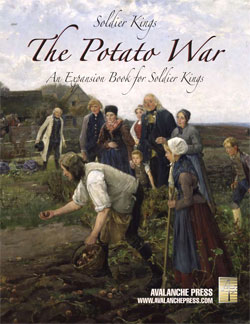 Soldier Kings has been a very popular title for us since its debut, and the Enlightened Warlords book with optional rules and such was pretty well-received as well. I’d always wanted to create a game based on the Potato War, mostly because of the name, and it seemed a natural extension for Soldier Kings. Soldier Kings has been a very popular title for us since its debut, and the Enlightened Warlords book with optional rules and such was pretty well-received as well. I’d always wanted to create a game based on the Potato War, mostly because of the name, and it seemed a natural extension for Soldier Kings.
When we published Enlightened Warlords, we had not yet perfected ways of making playing pieces at reasonable numbers. So even though I wanted to include additional pieces with Enlightened Warlords, we went without them, proving that you don’t necessarily need more toys to add more fun to a game. Even so, I still wanted some extra toys. The Potato War delivers: not just additional pieces, but a new map, too.
As I’ve written elsewhere, the Potato War interests me because of its place in the Austrian army’s obsession with historicism, the idea that one can learn useful, direct lessons from the past and apply them in the present. In their case, just as the South Army’s chief of staff Franz John used the 1848 Battle of Custoza as the model for his battle plans in 1866, so did his counterpart at North Army Gideon Ritter von Krismanic look to the operations in Bohemia during the War of the Bavarian Succession (the “Potato War”) for the campaign that led to the disastrous Battle of Königgrätz. That’s not an inference; Krismanic made his intentions very clear and in so doing provided a very useful overview of the Potato War’s military manuevers.
The Potato War, the book version, is built around a pair of new conflicts for Soldier Kings, each with a scenario treatment like that of the core game (a campaign game, and a short scenario for each year of the war).
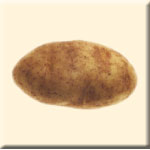   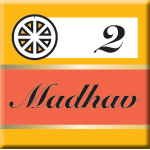
There’s the Potato War, of course, which like most wars of the period is actually a pair of interconnected conflicts. Prussia and Austria are tangling over the fate of Bavaria, and therefore going to war in Bohemia (war and diplomacy are not always the most logical of man’s pursuits). Meanwhile, Britain is facing rebellion in her North American colonies, and France – ever eager to discomfit the English – is on the verge of intervening with her full naval and military strength. That makes the Potato War part of a world-wide conflict, as the Spanish and the Dutch eventually find themselves on the side of France as well.
Unlike the interlocking conflicts of the Seven Years’ War, the Potato War and the American War took place simultaneously but were not closely connected. France failed to honor her alliance commitment to Austria and did not take the field against Prussia; the French did not even attempt to seize the Electorate of Hannover (ruled by Britain’s King George III), thereby demonstrating their neutrality in Germany to the nervous Prussian King Frederick II the Great. That possibility was always there; Austrian Empress Maria Theresa would eventually close off the flow of German mercenaries to English service as a gesture of friendship to France, for example, but the French did not join the war against Prussia.
Soldier Kings is a Euro-centric game: the real action takes place on the continent, with the Americas, India and the Indies serving as sideshows. Accordingly, the American Revolution isn’t the major focus of The Potato War (that’s why we called it The Potato War). British North America has three land areas worth seven Money total, which isn’t negligible. But each of the sugar islands down in the Caribbean will bring you between five and seven individually. As in the historical events, the British player is likely to place his or her fleets and armies to protect or seize the most valuable territories – and that doesn’t include New Jersey.
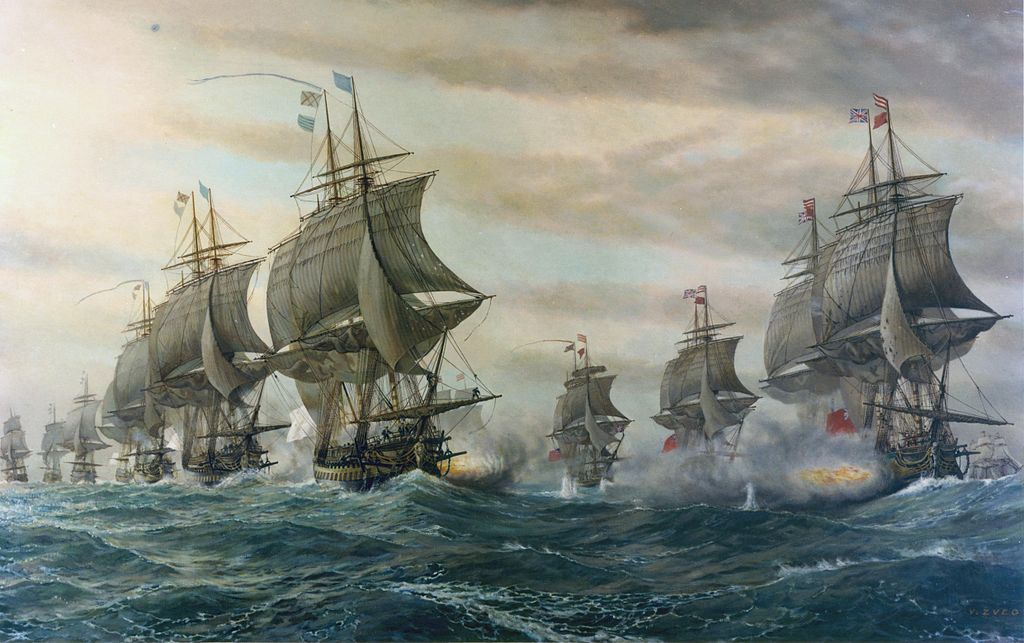
The French and British fight it out at the Battle of the Virginia Capes, 1781.
The Russo-Turkish War of 1768-1774, a war of conquest conducted by Russia’s Catherine the Great against the Ottoman Empire, makes up the other major theme of the book. It doesn’t get title credit because its name simply isn’t as fun as “The Potato War,” but it had the potential to embroil all of Europe in a renewal of the Seven Years’ War free-for-all, but with the alliance outlook radically changed.
The war grew out of Russian intervention in a Polish rebellion, as Catherine attempted to use the unrest there to assert greater Russian control of the ramshackle kingdom. Polish rebels fled into Turkish territory, Russian Cossacks pursued them over the border and massacred anyone they thought might be a rebel or sympathizer, Sultan Mustafa III (encouraged by the French) took affront, and war ensued.
Ottoman Turkey still had a formidable military reputation in 1768, and most observers felt that the Turks would make short work of the Russians. This suited a number of European powers quite well, as Catherine’s continued attempts to increase her empire’s power and influence unsettled them. Turkey’s fleets and armies vastly outnumbered those of the Russians, yet the smaller but better-led Russian forces scored victory after victory.
 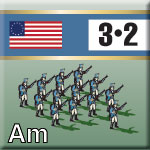 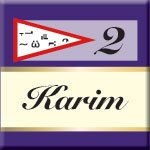 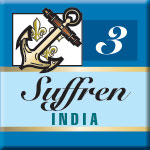
The thought of Catherine seizing not only Poland but vast stretches of Ottoman-ruled lands alarmed the European powers even more. In 1771 Maria Theresa of Austria, pressured by her son Joseph II and Chancellor Wenzel Anton von Kaunitz, approved an alliance with Ottoman Turkey – something utterly unthinkable even a decade earlier, but the realpolitik of the Seven Years War had altered the outlook of even the most Catholic of monarchs. Kaunitz threatened intervention, alarming Frederick of Prussia in turn: were Turkey destroyed, he would lose a traditional counterweight against Austrian power. Were Turkey victorious at the side of Austria, his Habsburg rivals would be greatly strengthened. Neither result could be tolerated.
Showing that war had changed him as well, Frederick offered a diplomatic solution: Prussia, Austria and Russia should carve up Poland instead. Russia would gain far less than Catherine had desired, but would not have to fight Austria and Turkey together. Catherine in turn would limit her gains against Turkey, taking Polish lands in compensation.
In game terms, the alliance structure has been flipped: Austria can ally with Turkey, and has incentive to fight Russia. Prussia is no longer trying to upset the European order and instead wishes to keep the balance of power intact. The world has not turned entirely upside down: the French and English still hate each other. But the scenarios do make for a very different game than the usual Soldier Kings.
Both scenario sets (Potato War and Russo-Turkish) use a version of the National Goals introduced in Enlightened Warlords, making for a much more historically accurate game than the territorial-grab victory conditions of Soldier Kings. They also induce players to act more like their historical counterparts, trying to achieve specific goals for their nation that may or may not align with those of their allies.
The Potato War also has some new toys for Soldier Kings.
Most noticeable is the new map, which extends eastward from the Soldier Kings Europe map. It covers the region from Constantinople in the southwest through Baku on the southeast to Volhynia in the northwest and Orenburg on the northeast. This new map brings with it some new armies: three flavors of Cossack, plus Kalmyks, Georgians and Persians.
And there are additional leaders and armies for the existing powers, made necessary for by new scenarios. A generation has passed between the Seven Years’ War and the Potato War, and though some of the really old guys are still in the saddle (none of the armies involved had any concept of a retirement age), most of the leaders were relatively junior during the prior conflict and did not rate their own pieces.
And there are some extras I would have liked to include in Enlightened Warlords: pieces for Naples, the Papal States and Sweden, and an enlarged role for Poland (pretty much necessary in the Russo-Turkish War scenarios).
As its publisher (and designer, and author) I like the package very much: The Potato War pretty much doubles the play value of Soldier Kings through its new and different scenarios. The situations are different enough so they don’t play anything like the originals, yet they remain true to history. We have extra playing pieces – nice silky-smooth die-cut ones – and I always like to see that. And we have the dreaded Potato Depletion Table. I like potatoes, and I like The Potato War. I think you will as well.
Click here to order The Potato War right now.
Mike Bennighof is president of Avalanche Press and holds a doctorate in history from Emory University. A Fulbright Scholar and award-winning journalist, he has published over 100 books, games and articles on historical subjects.
He lives in Birmingham, Alabama with his wife, three children and his dog, Leopold. Leopold likes potatoes.
|
